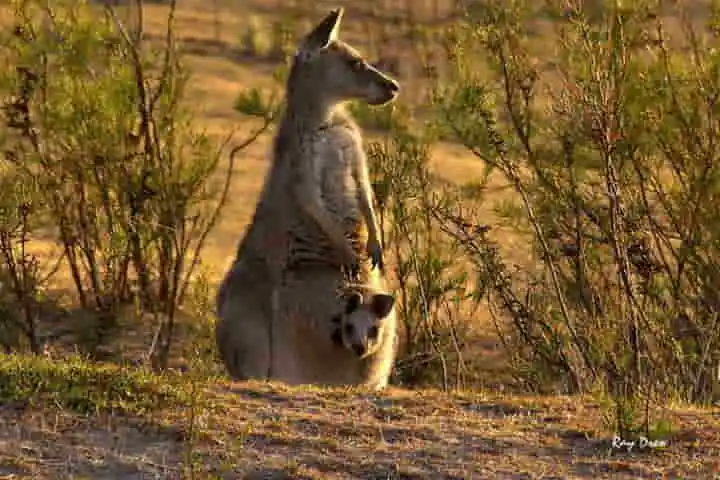It is indeed captivating to watch the mother kangaroo going around with her offspring, called joey, in the pouch. Even though there are other marsupials whose young ones are raised in pouches, like Tasmanian devils, koalas and opossums, the kangaroos as the ones who have caught the imagination of the humans, states a report in livescience.com.
Describing rather aptly, Rick Schwartz, who is the national spokesperson at the San Diego Zoo and an animal care supervisor, called the pouch of the kangaroo a sweatshirt hoodie put on backwards. While the sweatshirt hood is the pouch, the muscles of the mother kangaroo are like the drawstrings which she uses to open and close the pouch. He told Live Science: "It does open up quite a bit if she wants it to.”
The interior of the pouch is like that of a kangaroo's skin texture but without any hair while being soft. Schwartz said it can be compared with the skin on the inside of a human being’s wrist. To protect the joey, the pouch remains warm with the temperature being equal to that of the mother. This is 105 degrees Fahrenheit or 40.5 degrees Celsius, making it quite sweaty.,
There are four milk ducts or teats inside the pouch. Following the birth of the joey through the mother kangaroo’s vaginal canal after a gestation of 32 to 33 days, the offspring is very impoverished and weighs less than a gram and is about the size of a jellybean. Tenaciously using its forelimbs, the joey moves to the pouch. It is here that the little one fastens itself to a teat which is elongated, which swells and goes down its throat. This is where said Schwartz, the baby will hold on for about three-and-a-half to four months.
Also read: Older male elephants discipline adolescent males curbing their aggression – study
At the end of this nearly five months stay in the pouch, joey comes and explores the surroundings. All the while it stays close to the mother, returning to the pouch after its forays. This exploration continues for the next several months, with joey extending its stay in terms of distance and duration. By eight months, joey becomes adventurous. Between the period of 10 to 12 months is the weaning phase, when the offspring doesn’t return to the pouch.
The pouch over the period when joey stays there for the first five months becomes dirty as it defecates in it. Later, during its exploration outside too, it brings in dirt to the pouch on returning, Schwartz said. This entails cleaning of the pouch on the part of the mother kangaroo. For this, she puts her entire head inside to clean the droppings and grime inside with her tongue working around the joey or removing it when it grows older.
Also read: Orangutan apes believe if you spare the rod you spoil the child!
The number of offspring that a kangaroo gives birth to is limited to one only. She may mate but if the conditions are not conducive to bring forth joey, for example if there is a drought, the implanting of the embryo into the uterus will be postponed. As per Schwartz, it is at the right time, the embryo comes out of its dormant stage, with the gestation commencing.
In one year, the female can give birth to up to four offspring from just one mating. After giving birth to one, her body holds back implanting the next embryo till the first joey is a few months old and spends time outside its home, the pouch. Schwartz observed: "Her body can produce the right kind of milk nutrients for an 8-month-old, and the other teat can create the proper nutrients for a newborn.”




















